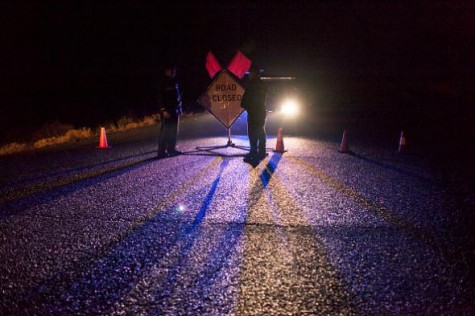1 Dead, Four Remain in Wildlife Refuge Occupation

An armed siege of a wildlife refuge facility that took place at the beginning of January has now dwindled to four people and lead to the death of one of the protesters.
The so-called leader of the group, LaVoy Finicum, was killed after speeding away from a traffic
stop specifically set up by the police. After narrowly missing a roadblock of police vehicles, the driver swerved and crashed into the snow. While initial reports claimed the leader was killed while surrendering to police with his hands in the air, the FBI released aircraft footage of the incident clearly showing that Mr. Finicum had reached for an object on his waist. The object was later discovered to be a 9mm semiautomatic handgun.
The other passengers in the vehicle, who were also occupants of the wildlife refuge, were arrested. A total of eight arrests were made, leaving only four occupiers remaining in the wildlife refuge.

Tensions had been high in the previously quiet, rural town within Harney County, Oregon after a judge determined two residents, father and son Dwight and Steven Hammond, had not served enough time in a California prison for previous arson convictions. A group of 150 locals protested in response on January 2, and eventually stormed a wildlife refuge, demanding that the court drop the charges. The protesters targeted the wildlife refuge in an effort to obtain the federal government’s attention regarding the charges which they saw as “a symptom of a very huge, egregious problem” (New York Times).
No one was in the facility upon the armed siege. The group did not intend to harm or cause violence, but reportedly said they would defend themselves if necessary.
Police did not initially take action, but merely operated surveillance on the group. While community leaders, federal authorities and even the Hammonds’ lawyer demanded an end to the occupation, the protestors had told The Oregonian “We’re planning on staying here for years, absolutely.” The group even uploaded a video to Facebook, asking support from local militias to join them.
The call for support must have remained unheard of or ignored, as the occupiers began to diminish in number; both from arrests and protesters voluntarily leaving. Tensions remained strained until police timely orchestrated a traffic stop of a group of occupiers, resulting in the eight arrests and one death. Those who were arrested will receive charges from federal court for conspiracy to impede officers of the United States from discharging their official duties through the use of force, intimidation or threats, which is a felony. With four remaining, one dead, multiple arrests and the Hammonds still going to prison, it is not a surprise that a number of questions, regarding both the successfulness and the point of the occupation, continue to arise.
The four occupiers who remain are willing to comply with police, so long as charges against them are dropped. Whether or not police will participate in a negotiation to end the occupation also remains a question.










